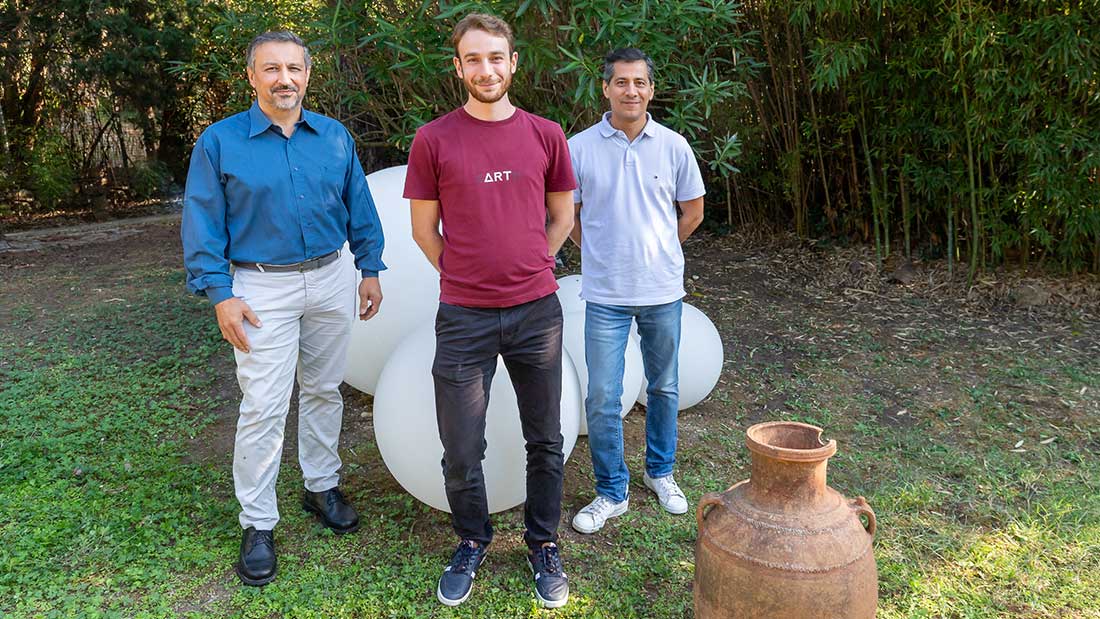
Technologies to help preserve the environment
The French Alternative Energies and Atomic Energy Commission or CEA (French: Commissariat à l’énergie atomique et aux énergies alternatives), is a French public government-funded research organisation.
Many of us know CEA for its activities in atomic energy, but it works in many other fields of application (defense, security, information technologies, and health).
CEA conducts fundamental and applied research programs, and contracted ELSYS Design to join an ambitious 2-year long budget project; the goal was to develop a proof-of-concept in the area of technologies designed to help monitoring and preserving the environment.
We discussed with André, the PACA technical Manager, Juan, senior hardware engineer, and Alexis, embedded system engineer, all based in Aix-en-Provence.
A moonshot project
The CEA researchers imagined an innovative platform enabling to control the quality of its surrounding environment.
It consists of a moveable system fitting in a less than 3 m X 2 m X 2 m area, with a 10-meter-high telescopic mast full of sensors, enabling to measure of a wide range of indicators including weather information (e.g. temperature, pressure, wind…), regulatory gaseous pollutants (e.g. ozone), radiation and emerging gaseous pollutants (e.g. ammonia).
These indicators are pre-processed by an embedded AI, before being transmitted to a database where another AI processes and manages alarms.
These elements are stored over several years to do modeling and predict problems.
The use cases are currently oriented towards diffuse pollution (e.g.: urban pollution) aiming to respond to global societal challenges.
The role of ELSYS Design
ELSYS Design’s role was to help convert this vision into reality through the making of a proof-of-concept. This implies an involvement at all steps of the V-cycle project: project coordination (including subcontractors), architecture, specifications, hardware design, firmware development, validation, and integration.
André comments: “This project was at the crossroads of research and industries. We sincerely thank the CEA teams for their trust, which allowed us to position ourselves in a very transversal and central position, which was very rewarding for us.
Even though we were subcontractors, we were asked for our opinions, and felt we had a real added value.”
Juan, who joined the project last March, continues: “One of the challenges lay in respecting an ambitious deadline we had, presenting a demo by mid-July. To do so, we had to refine the specifications during the project and unfortunately put aside some sub-systems. But these difficult choices allowed us to meet the deadline.”
Technical challenges
The platform includes several advanced technologies. We can mention sensors, embedded LoRa and Mesh Lora, Satellite IoT, Bluetooth Low Energy, 3G, and 4G.
The choice of Mesh LoRa was audacious. Alexis comments: “We were put in contact with a startup specializing in this emerging technology to implement it on the platform. Mesh LoRa was new to me: starting from scratch, collaborating, and reaching the functional demonstrator level within the time allowed was very satisfying.”
Results
As expected, the PoC was installed by mid-July at the CEA premises in Cadarache.
Our customer was very satisfied with our collaboration:
“A superb first proof of concept resulting from a collective and federated work.
I associate myself, of course, with all the thanks mentioned by Sébastien to the CEA teams and the ELSYS teams. […]
And for this first commissioning, I particularly send a message of thanks to the ELSYS team (in particular Alexis, who has had a few cold sweats in the last 48 hours… 😊). »
Congratulations to the project team for this great success!